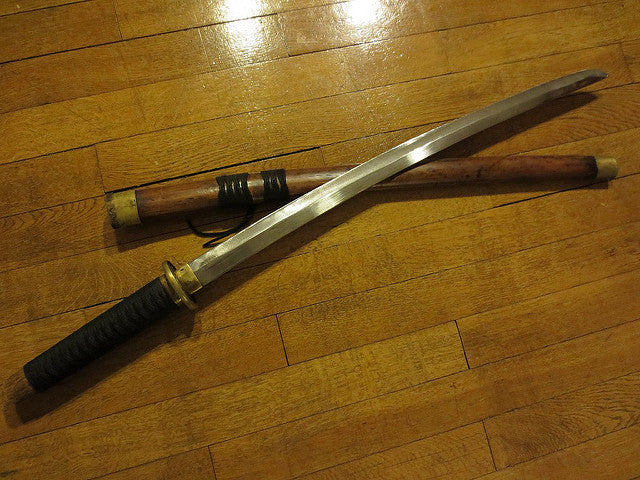Votre panier est vide


The katana is known throughout the world as being a superior sword with an unparalleled level of strength and versatility. Originating in feudal Japan, it's been around for centuries. And in that time, it's only become more popular -- even though countless other swords have emerged. So, why is the katana still regarded as being the best sword in history?
#1) The Right Length
Swords have been designed in a variety of sizes over the years. Some feature blades just 1 to 2 inches long, whereas others feature blades longer than 50 inches. The katana, however, featured the perfect blade length. With an average length of 23 5/8 to 28 3/4 inches (60 to 73 cm), it wasn't too long nor to short. The moderate length of the katana allowed samurai warriors to easily wield and use it in a variety of scenarios.
#2) It Was Worn the Cutting Edge Up
A key difference between the katana and other traditional Japanese swords lies in the way in which they were worn. The katana is unique because it was the only Japanese sword worn with the cutting edge up. Samurai warriors found that wearing the katana with the cutting edge up made drawing and unsheathing the sword easier.
#3) Production Was a Methodical Process
Producing a traditional Japanese katana was a painstakingly difficult and methodical process. While some cheap, mass-produced swords today are rolled out of the factory in just hours, it took months to create a traditional Japanese katana. In fact, one report found that, on average, it took six months to forge a single katana. Considering that tens of thousands if not hundreds of thousands were produced throughout Japan's history, that's a pretty astounding number.
#4) Differential Heat Treatment
Another reason the traditional Japanese katana is regarded as being the world's best sword is that they were forged using differential heat treatment. This involves heating and cooling the katana's spine and edge at different rates, thereby creating a stronger edge and a more flexible spine.
#5) The Right Composition
Finally, the traditional Japanese katana had the perfect composition of metals. In the early days of Japan's bladesmithing craft, swords and bladed weapons were produced with basic, low-carbon steel. However, swordsmiths discovered that adding carbon to their swords resulted in a stronger blade. This led to the development of tamahagane steel -- a high-carbon steel that was used to make traditional Japanese swords like the katana.